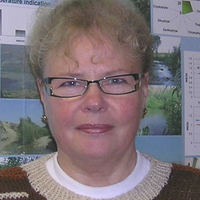Biography
Research Interest
Biography
1. What makes an article top quality?
Response: I think that top quality of paper in our journal can make the quality of illustrative material, simply of access to the articles in the site, as well as wide distribution of invitation for publish paper in the journal. Thereforeeditors can choose the best.
2. Do you think that journals determine research trends?
Response: Now the EOEB journal published not so many papers. The trend of papers is now not so clear.
3. What makes a good position paper?
Response: Is very important to publish Editorial papers that can focus to the major problems of environmental biology, concentrate to attention of readers to the important problems and its solution in concentrative form.
4. What are the qualities you look for in an article?
Response: Paper can be related to my own experience and included a significant conclusion.
5. Can you give us a broad indication of the types of themes a scientific journal should cover?
Response: Ecosystem theory, Bio-indication of environmental quality, Biodiversity and climate change, Altitude-related fluctuation in species diversity, The problems of aridization and diversity response.
6. What sorts of research methods and frameworks do you expect people to use, and how will they balance conceptual and applied research?
Response: It will be productive to ask the authors to use more statistical approaches to the environmental and diversity relationships calculation.
7. How would you describe the journal’s mission and editorial objectives to our readers?
Response: I think the our journal can give to the scientific community some new look, new approach for relationships of biodiversity and its environmental assessment in the frame of holistic ecosystem theory.
8. If you could be granted dream articles, what would they be on?
Response: On holistic ecosystem theory.
9. Are there any particular areas which you would like to see, or expect to see, collaborate?
Response: Yes, it can be bioindication as well as climate-related assessments.
10. How does the research published percolate through to practitioners?
Response: I think that our journal must crush all borders between published papers and readers to give open access for community. In this way we can more impacted it.
11. How can a publisher ensure the authors/readers a rigorous peer review and quality control?
Response: We can strongly track the time of review. If the reviewer cannot give report in time, immediately ask the next one.
12. Your editorial policy is to be eclectic and welcome perspectives from other disciplines and schools. How does this translate into the types of contributions you encourage?
Response: I think that holistic approach to the ecosystem state assessment can give a field to elaborate new approaches and collaboration of different scientists.
13. What do you see as the merits of journals, as opposed to book series, as a means of scholarly communications?
Response: It is very important the net access and rapid publication of different scientific results in the journals in compare to the books. In this way is very important to give the readers open access to our published papers.
14. How do you differentiate Expert Opinion on Environmental Biology with other journals in the field?
Response: In present stage we can see only one difference - the Editorial papers which are strongly follow to the field of EOEB.
